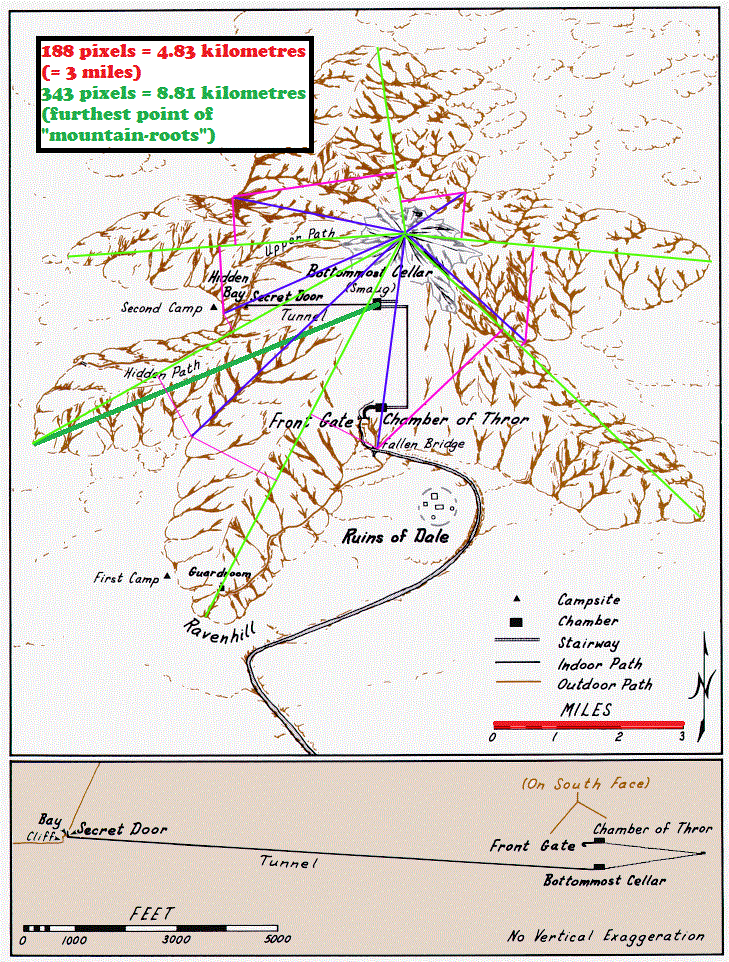- 9,690
- 8,751
The only difference was the change in magnitude of the earthquake, but it's the same earthquake method.Didn't the old calculation get outdated and replaced by a more reliable method?
Follow along with the video below to see how to install our site as a web app on your home screen.
Note: This feature may not be available in some browsers.
The only difference was the change in magnitude of the earthquake, but it's the same earthquake method.Didn't the old calculation get outdated and replaced by a more reliable method?
Hmm. If you link to both calculation blogs, I can then ask a few other calc group members to help you evaluate which of them that is most reliable.

@Therefir @DMUA @DemonGodMitchAubin @Jasonsith @Wokistan @Armorchompy @Migue79
Lord of the Rings Calc: The Wrath of Smaug REDO
vsbattles.fandom.com

Lord of the Rings Calc: The Wrath of Smaug
vsbattles.fandom.com
@Therefir @DMUA @DemonGodMitchAubin @Jasonsith @Wokistan @Armorchompy @Migue79
Which of the calculations linked above do you think seems most reliable to use?
I would say your calc is more accurate to what Smaug was actually doing.
@M3X_2.0 @Dark-Carioca @AbaddonTheDisappointment @Aguywhodoesthings @Dalesean027 @DemiiPowa
Lord of the Rings Calc: The Wrath of Smaug REDO
vsbattles.fandom.com

Lord of the Rings Calc: The Wrath of Smaug
vsbattles.fandom.com
Thank you very much for helping out.First calculation seems to be more accurate when finding the shape of the mountain
The first one seems more suitable as it strives for accuracy and the OP has done a good job.@M3X_2.0 @Dark-Carioca @AbaddonTheDisappointment @Aguywhodoesthings @Dalesean027 @DemiiPowa
We need to know which of the above calculations that seems most reliable to use.
I'm not sure, so far only Smaug scales to the calc, although I have other queries on Smaug's tier:@Hagane_no_Saiyajin which characters scale to the calculation? So, I can update them accordingly.
I just also wonder, does Smaug scale to Gandalf? Gandalf did seem scared of him after all, and Dragons are supposedly stronger than Balrogs, but I could be wrong, I think this maybe a good read:
Concerning the Origin of Dragons
CONCERNING THE ORIGIN OF DRAGONS Introduction Of all the mysteries that Tolkien left for us to solve, the or...cogitemusaccurate.blogspot.com
I'm not saying that my calc should be discounted though, think of it as like a low ball of sorts, like Smaug is now "at least 7-C, likely Low 7-B, possibly higher"
Alright, since the first calculation has been accepted by majority, I will be re-editing and adjusting it accordingly.I'm not sure, so far only Smaug scales to the calc, although I have other queries on Smaug's tier:
Is the document you sent canon?I just also wonder, does Smaug scale to Gandalf? Gandalf did seem scared of him after all, and Dragons are supposedly stronger than Balrogs, but I could be wrong, I think this maybe a good read:
Concerning the Origin of Dragons
CONCERNING THE ORIGIN OF DRAGONS Introduction Of all the mysteries that Tolkien left for us to solve, the or...cogitemusaccurate.blogspot.com
I'm not saying that my calc should be discounted though, think of it as like a low ball of sorts, like Smaug is now "at least 7-C, likely Low 7-B, possibly higher"
As @Hagane_no_Saiyajin mentioned before, no. Only Smaug as far.Do any other characters scale from Smaug?
Yes, it references canon Tolkein material like the SilmarillionIs the document you sent canon?
To gain dominion over Arda, Morgoth had let most of his being pass into the physical constituents of the Earth—hence all things that were born on Earth and lived on and by it, beasts or plants or incarnate spirits, were liable to be ‘stained’. (Morgoth’s Ring, 394-5)
Melkor ‘incarnated’ himself (as Morgoth) permanently. He did this so as to control the hroa, the ‘flesh’ or physical matter, of Arda. He attempted to identify himself with it. A vaster, and more perilous, procedure, though of similar sort to the operations of Sauron with the Rings. Thus, outside the Blessed Realm, all ‘matter’ was likely to have a ‘Melkor ingredient’, and those who had bodies, nourished by the hroa of Arda, had as it were a tendency, small or great, towards Melkor: they were none of them wholly free of him in their incarnate form, and their bodies had an effect upon their spirits.
But in this way Morgoth lost (or exchanged, or transmuted) the greater part of his original ‘angelic’ powers, of mind and spirit, while gaining a terrible grip upon the physical world. . . . Sauron’s, relatively smaller, power was concentrated; Morgoth’s vast power was disseminated. The whole of Middle-earth was Morgoth’s Ring . . . .(Morgoth’s Ring, 399-400)
The first to be corrupted by Melkor were lesser Ainur, the Maiar:
And Melkor knew of all that was done, and even then he had secret friends and spies among the Maiar whom he had converted to his cause; and far off in the darkness he was filled with hatred, being jealous of the work of his peers, whom he desired to make subject to himself. Therefore he gathered to himself spirits out of the halls of Ea that he had perverted to his service, and he deemed himself strong. (Silmarillion, 30)
For of the Maiar many were drawn to his splendour in the days of his greatness, and remained in that allegiance down into his darkness; and others he corrupted afterwards to his service with lies and treacherous gifts. (Silmarillion, 26)
Then the Valar forsook for a time the Men of Middle-earth who had refused their summons and had taken the friends of Morgoth to be their masters; and Men dwelt in darkness and were troubled my many evil things that Morgoth had devised in the days of his dominion: demons, and dragons, and misshapen beasts, and unclean Orcs that are mockeries of the Children of Iluvatar. (Silmarillion, 320)
The theory that Dragons are Maiar avoids many of the problems of the previous theories. On this theory, Dragons are Maiar, ancient spirits in the form of gigantic, serpentine monsters. The fact that Maiar have the ability to take on corporeal forms has been established previously. Melkor’s deadly allies, the Balrogs, were Maiar in the raiment of fire and shroud. The wizards were Maiar in the form of Men or Elves.[7]
The problem with this theory is that the Maiar are not a race but an order of angelic (or demonic) beings created before the world began. They do not procreate one with another.[8] Their number neither increases nor decreases in the world. Dragons, however, are known to reproduce. “And I know where Mirkwood is, and the Withered Heath where the great dragons bred.” (-Thorin in The Hobbit, 19)
The theory that Dragons are the species begun from the union of Maia and beast is the most satisfying of the many theories discussed in this paper. It is consistent with the world Tolkien created. The theory takes advantage of the fact that Maiar, at times, arrayed themselves in forms of dreadful power, even in the forms of beasts and monsters. It places Melkor as the devisor of the Dragons but not as a creator of life. And it is fitting for Melkor to have allies and slaves of all kinds, including crossbreeds. That this theory is most satisfying is not surprising because it is the most impure, unholy theory, involving demons and **********; and Dragons are, after all, very evil creatures. The theory is also reminiscent of the Minotaur from Greek myths and Baal from Canaanite religion, and distantly related to Merlin of Arthurian legend and the Nephilim of Genesis; Tolkien was surely familiar with all of these.
What do you mean exactly?Gandalf is (or was) a Maia right, wouldn't that mean that Smaug scales?
nvmWhat do you mean exactly?